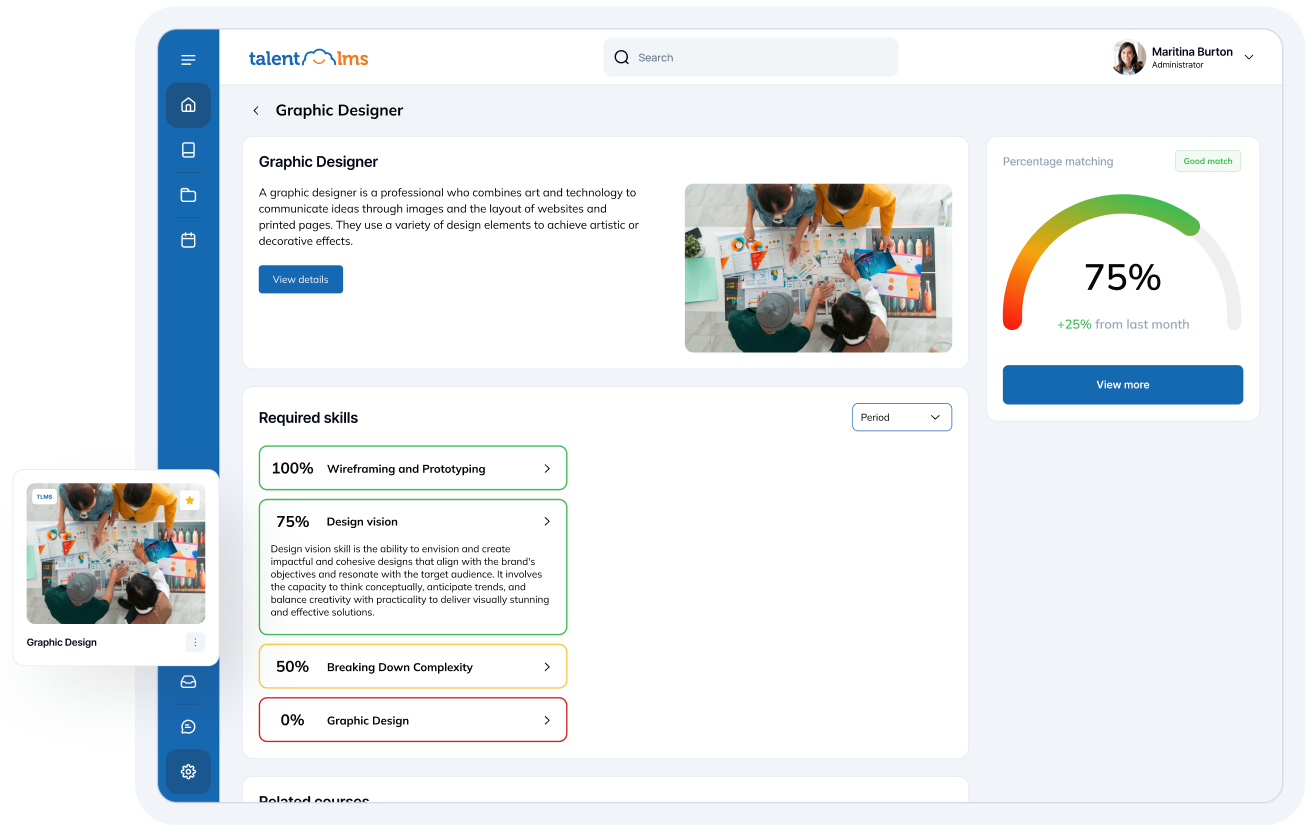The answer to “what do employees” want is always evolving, and lately, it feels like it’s changing faster than ever. There are many reasons for this.
Return-to-office (RTO) mandates are starting to challenge the fully remote working models that emerged during the COVID-19 pandemic. Making hybrid working much more prevalent. Workplace demographics are also shifting, with Millennials and Gen Z employees now forming the majority of the workforce. Technology is playing its part, too. AI is becoming mainstream for many businesses and most global knowledge workers.
As a result, what employees want in the workplace has changed dramatically.
This post explores the top 15 things employees seek from their employers in 2025. Leaders and managers can use it to create a workplace that engages employees, boosts retention, and fuels performance.
Why should you focus on what employees want?
Catering to employee expectations and motivations brings several benefits:
- Higher productivity and performance: Valued employees are more motivated to go above and beyond.
- Improved retention: Promoting work-life balance and growth opportunities makes employees want to stick around longer.
- Stronger recruitment: Word spreads about great work cultures. Plus, taking what employees want in the workplace seriously helps you stand out and attract top talent.
- Innovation and creativity: Helping your team thrive sparks new ideas and innovation.
- Loyalty and employee engagement: Employees feel invested in a company that invests in them.
15 things employees want in 2025
- Work-life balance
- Positive workplace culture
- Flexibility and autonomy
- Job security
- Recognition and appreciation
- Career growth opportunities
- Supportive management and leadership
- Alignment with company values
- Financial wellbeing
- AI
- Transparency
- Mental and physical wellbeing
- DEI
- ESG-driven benefits
- Upskilling and reskilling
What do employees want in 2025?
The modern employee’s wish list spans two broad categories: what they want from the workplace and what they want from employers. A good work environment is a great start, but employees want more. They want employers who are supportive, appreciative, and invested in their professional growth. Our 10-strong list covers both aspects of this divide.
1. A healthy work-life balance
In recent years, employees have faced higher levels of burnout and stress. One of the main factors behind this is that they’ve had to adapt to new work methods while balancing life responsibilities. 72% of employees say a healthy work-life balance is essential. But 26% currently work outside business hours. This is a clear signal for employers to step in and help.
Providing help benefits both employees and employers.
Employees with a healthy work-life balance tend to have higher job satisfaction, better mental health, and a positive employee experience. For companies, supporting a better work-life balance can also lead to lower absenteeism, greater talent retention, and a more positive workplace culture.
To help employees achieve better work-life integration and to solve the modern-day issues they face, companies can implement the following:
- Flexible schedules
- Remote work options
- Generous time-off policies
- Employee assistance programs
- Boundaries around after-hours work communications
Managers should also check in regularly on employees’ well-being and model a healthy work-life balance themselves.
2. A positive workplace culture
Workplace culture refers to the shared values, attitudes, standards, and beliefs that characterize an organization.
A well-crafted (or positive) company culture brings out the best in employees by making them feel genuinely cared for, heard, and empowered. It underpins brand advocacy and leads to higher employee retention, performance, and innovation levels.
Several hallmarks of a positive culture exist. These range from trust and transparency, collaboration, employee recognition and inclusion, to wellness, a sense of purpose, and fun.
How can companies create this type of culture? There are three main ways:
- Start at the top. Executives, leaders, and managers should be role models for the desired behaviors.
- Hire people who exemplify your company’s values. Promote these during the recruitment process and reference them in assessments and interviews.
- Introduce routines, practices, and habits that reinforce cultural norms. For example, team lunches or peer recognition programs.

3. More flexibility and autonomy
Flexibility and autonomy in the workplace are becoming more mainstream.
Eighty percent of employees say flexible and remote work arrangements improve their work environment. Catering to this need makes workers happier and more engaged. Which, in turn, makes businesses 21% more profitable.
Flexibility also expands your available talent pool since you’ll also attract people like parents and caregivers.
In addition to flexibility, what employees want is more autonomy over how they complete their work. Giving employees more autonomy boosts their engagement, as they feel a sense of ownership for their tasks and work.
To support flexibility and autonomy, employers can:
- Offer flexible scheduling options. For example, flex time, condensed weeks, and remote or asynchronous work
- Let employees decide where they work.
4. Job security
Job security refers to the degree of confidence employees have in the long-term stability of their positions.
Lately, employees have grown more wary about the security of their roles because of bad economic trends and perceived threats like AI. Our research shows that 58% of employees say AI is linked to job insecurity.
However, even despite this, most businesses can’t guarantee lifetime employment. There are simply too many uncertainties.
Thankfully, there are several ways companies can help with greater job security without promising a job for life:
- Be transparent about your company’s current financial health and outlook.
- Invest in upskilling/reskilling programs to build up employees’ versatility and value.
- Limit or avoid unexpected layoffs.
- Cross-train employees to build internal mobility. Then, you can move current employees into new roles instead of hiring externally.
5. Recognition and appreciation
All employees want to feel valued and appreciated for their contributions.
Leaders should take every opportunity to recognize good work and praise accomplishments, both big and small.
Something as simple as a “thank you” or “well done” can help your team feel valued. However, don’t cheap out on appreciation. Instead, “show some love” when the right moment arrives.
Here are some ways to show appreciation:
- Give a shout-out during team meetings.
- Send thank you emails or cards. (If possible, say it in person!)
- Celebrate work anniversaries and accomplishments.
- Recognize the top performers each month.
- Treat teams to celebrate milestones. For example, take them out for lunch.
6. Career growth opportunities
The chance to develop professionally is one of the most sought-after factors people look for in their jobs.
If they can’t grow or learn, they’ll leave.
According to our Annual L&D Benchmark Report, retention is closely aligned with training and growth opportunities, particularly among younger generations. To be more specific, Gen Z are 5.3 times more likely to job hunt compared to their Baby Boomer counterparts. While 1 in 5 Millennials would do the same.
The stats speak for themselves. According to a McCrindle’s Generational Worker Profiles Infographic, it is estimated that by 2034, Gen Z will make up 34% of the workforce, closely followed by Millennials (32%), as well as the newcomers, Gen Alpha (15%). That means that 80% of the workforce will expect an investment in their ongoing growth, making it a key priority for business leaders.
To keep employees engaged and retain talented team members, employers should offer continuous L&D opportunities. Doing so also reassures employees that their potential is valuable and builds a pipeline of experienced employees.
Companies can make employee L&D a top priority through:
- Training and development programs. For example, boot camps, certifications, or academies.
- Mentorships. Pair junior employees with experienced colleagues.
- Job rotations. Allow employees to rotate between departments, take on special projects, or fill interim roles that add to their knowledge.
- Leadership development. Support high-potential employees in developing into the managers and executives of tomorrow.
- Upskilling and reskilling. 71% of employees seek more regular skill updates. Provide training to help them build new skills or update old skills.
- Coaching. Assign managers and dedicated career coaches to work one-on-one with employees to set goals, hone skills, and overcome obstacles.
7. Supportive management and leadership
The old command-and-control management style is no longer effective. What employees want is a manager who listens to them, coaches them, and genuinely cares about their development and personal well-being.
The best modern managers act as mentors who empower employees to take initiative and grow. Their leadership style revolves around unlocking the potential of their team members.
Another popular style is the servant leadership style. Servant leadership is about serving the team above all else. Instead of focusing purely on results, servant leaders lead by example and remove obstacles so their teams can thrive.
Leaders who incorporate these styles with their teams will likely see higher employee satisfaction, engagement, and retention.
8. A sense of purpose and alignment with company values
Employees increasingly seek jobs that align with their values and give them a sense of purpose. The reason this is so important to them? 70% of them say that their purpose is derived from their work. Another reason is that people innately work harder when they have a clear goal.
Companies that convey a sense of purpose reap huge employee engagement, retention, and performance benefits.
How can employers help align purpose and values? They can:
- Communicate the company’s vision and how each employee’s role ladders up to serving that vision.
- Discuss how skills and interests align with company values during onboarding and reviews.
- Offer volunteer programs where employees can use their work time to contribute to causes they care about.
- Recognize employees who exemplify company values.
- Invite employees to share their passions and interests. Then find opportunities for them to apply these at work.
- Conduct employee surveys to gain insights into what gives them a sense of meaning and fulfillment day-to-day.
9. Fair compensation, benefits and financial wellbeing
What employees want the most is fair pay and benefits for their work. According to a Gallup survey, 64% of workers view compensation and benefits as very important, and they now rank as the most important want.
We often talk about wellbeing, but this also includes financial wellbeing. This goes beyond just giving employees a paycheck but giving them peace of mind that they will earn more as they continue to work at your company.
Employers should offer competitive salaries that align with industry standards, and regular pay raises to keep up with the cost of living. Those who do tend to have more satisfied and engaged employees.
They should also offer more than just a paycheck. To build a comprehensive benefits package, they need to understand what benefits are most meaningful to employees. The most important employee benefits typically promote their wellbeing and financial stability.
Employers should build benefits programs that cater to these primary needs and the other wants in this blog. For example, they could offer employees time management courses to support their wellbeing and flexibility.
And in terms of financial wellbeing, this means offering employees the tools and training necessary to adapt to stressful financial situations (e.g., debt management, budgeting, retirement and more).

TalentLibrary – Skills that matter, courses that deliver
With TalentLibrary, you set the foundation for a strong, aligned workforce—soft skills, compliance, and workplace essentials, from day one (and beyond).
10. Help with AI
AI is transforming workplaces and prompting a shift in the employee mindset. Fear of the unknown is gradually being replaced by curiosity and an acknowledgment that generative tech may be more friend than foe.
With the right training, AI can act as a force for good when it comes to many of the employee wants we’ve already listed. Take career development and job security, for example. Over half of employees agree that AI proficiency will enhance their career prospects. And a similar number agree it will help them stay competitive in their role. Training on AI tools can also support personalization, leading to a better employee experience. It can give employees greater flexibility and autonomy within the workplace. And, by taking on mundane tasks, also help employees achieve a better at-work balance.
As it stands, employees get less training on AI than they want, with 67% saying they would like to get training on new AI tools. This is a strong call to action for employers looking to better address employee needs.
11. Transparency
Transparency has been a trend and buzzword for ages, but for today’s workforce it’s becoming more and more requested. In fact, research from Slack found that 87% of job seekers prioritize transparency when evaluating potential employers.
This is because employees want a clear view of what’s happening within their company—the decision-making process, overall performance, and future plans.
Aside from that, transparency leads to open and honest communication which builds trust, leading to increased engagement, higher motivation, and stronger employee commitment.
Creating a transparent workplace requires a conscious effort. Here’s how employers can make it happen:
- Regularly share updates with employees about company matters, no matter how big or small.
- Present insights into company performance and financials, helping employees understand the bigger picture.
- Be upfront about challenges and setbacks.
- Encourage two-way feedback.
12. Mental and physical wellbeing support or benefits
Today’s employees are looking for a holistic work experience that supports their mental and physical wellbeing.
This shift in priorities is driven by a growing understanding that employee wellbeing directly impacts engagement, productivity, and retention. In fact, a recent study revealed that companies with strong wellbeing programs report better (up to double) human capital and financial outcomes. Plus, according to our L&D report, 62% of employees believe that training supporting overall wellbeing will play a crucial role by 2025.
So, how are leading companies boosting wellbeing?
- They’re ditching the “always-on” mentality and embracing flexible work schedules that allow for personal life integration.
- They’re providing access to on-site fitness facilities or subsidized gym memberships.
- They’re offering generous parental leave policies and childcare support.
- They’re investing in mental health resources, from employee assistance programs to mindfulness workshops.
And perhaps most importantly, they’re creating a culture where employees feel comfortable speaking openly about their mental health without fear of stigma.
13. DEI
Since the emergence of Diversity, Equity, and Inclusion (DEI) initiatives, there has been a huge shift in how companies build and manage their workforce.
Moreover, it’s something many employees are looking for and an area with massive potential for employers. According to a recent McKinsey study, the top 25% of companies have, on average, over 39% of executives from traditionally marginalized ethnicities.
Building a truly diverse, equitable, and inclusive workplace requires more than just good intentions. It demands a proactive approach that embeds DEI into every aspect of the employee lifecycle. This includes implementing inclusive hiring practices, providing unconscious bias training, creating mentorship programs for underrepresented groups, and establishing clear pathways for career progression.
14. ESG-driven benefits
Employees are increasingly seeking employers who share their values, particularly when it comes to environmental, social, and governance (ESG) issues.
According to Great Place To Work research, companies that actively promote ESG initiatives receive six times more endorsements, double the employee retention, and are more likely to be recognized as a “great place to work.”
Forward-thinking companies are responding by offering ESG-driven training or benefits that align with employee values. This includes offering paid time off for volunteering, matching charitable donations, providing sustainable commuting options, and investing in renewable energy.

15. Upskilling and reskilling
Today’s employees are highly motivated to remain competitive in a dynamic job market. They recognize that continuous upskilling and reskilling are essential for career progression and seek employers who can help them. According to our research, 77% of employees agree that learning new skills gives them a sense of purpose.
The upside for employers is that employees who feel their skills are up-to-date and relevant are more engaged, productive, and likely to stay with the company.
On top of that, employers who invest in upskilling and reskilling initiatives see improved morale, a more positive workplace culture, and a workforce that is equipped to meet the challenges of a rapidly changing business environment.
To help employees upskill and reskill, offer them a variety of training programs, including online courses, workshops, and mentoring opportunities. Also provide access to resources such as industry conferences, professional certifications, and tuition reimbursement programs.
Some things will always be important
Factors like globalization, new technologies, and growing generational differences will continue to make workplaces more diverse. This is, of course, a great thing. But it also means employee wants will start to become more diverse. And become harder for L&D and talent development teams to track. One way to address this is to take positive action. Instead of wondering, “What do employees want?” take preemptive steps and ask them directly.
And remember that while workplaces become more diverse and new ways of working emerge, the fundamentals hold. Irrespective of generation, gender, nationality, or sexual orientation, there are some things employees will always want from their workplace.
A sense of safety and stability; a sense of purpose; opportunities for learning, growth, and career development; and to feel valued, respected, and heard. Companies that tap into these core employee needs will be poised to win the war for talent in 2025 and beyond.
Originally published on: 17 Mar 2022 | Tags: employee appreciation,Employee Engagement,Employee Incentives,employee recognition



![70+ Employee Recognition Ideas For Your Org & Budget [2025]](https://images.www.talentlms.com/blog/wp-content/uploads/2023/06/Employee-Recognition-Ideas_19February2025_Big.png)

